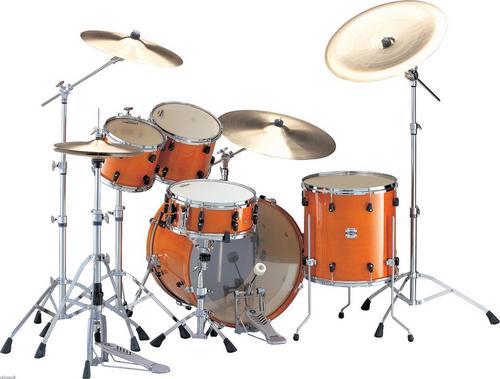| Buyers Guide for Drummers Perhaps I¿m showing my age here, but I¿ve always had a fancy to play the drums and be as good as Gene Krupa, or maybe Ginger Baker or Keith Moon. But there seemed to be such a variety of drum kits that I¿d end up getting confused. How do you sort out what you need to buy to suit your style of playing? Here¿s looking at some basics: If you¿re just starting out, then a basic 4-piece drum kit, bass drum, snare drum, tom drum and cymbal is fine. As you progress, you¿ll probably add more toms, cymbals and maybe a second bass drum, particularly if you are into rock playing. |  |
| The type of wood used in drum construction has a great impact on the overall sound. The most popular is maple, which gives a warm and balanced tone, whereas birch, being a harder wood, gives a sharper, brighter tone. Midway between the two is poplar, which has the benefit of being somewhat cheaper. Mahogany will give better response at low frequencies. Of course, you can get away from the traditional drum kit altogether and go for the electronic alternative. These have the enormous advantage of being able to be played in almost total silence if you use headphones, yet if plugged in to a sound system can produce a full volume. Another advantage is the ability to produce different sounds at the press of a button. Finally, to complete your setup, you¿ll need good quality drumsticks and a set of brushes. Make sure you try a large variety of drumsticks of various weight and thickness to find those that suit you. Happy drumming! |